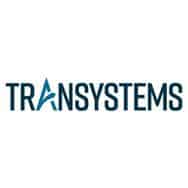Most engineering professionals I speak with have goals focused around being a more successful engineering leader in their organizations. The challenge is that engineering projects, departments, and divisions are highly complex, requiring a blend of strong leadership and organizational skills. General George C. Marshall had both, and in this article, I would like to share the strategies he used and provide some recommendations as to how they can be utilized in the engineering world.
I learned about General Marshall through reading Cal Newport’s book “A World Without Email.” I then decided to research Marshall further and found a wonderful paper entitled “George C. Marshall: An Enduring Model of Leadership Effectiveness,” written by Jack Clarcq, Richard DeMartino, and Michael E. Palanski (2011). This article is based on the information provided in said paper, which was based on interviews with the last remaining Marshall subordinates and which were conducted in 1989.
Marshall is considered by many to be the one of the most effective leaders ever, including acclaimed management expert Peter Drucker, who referred to Marshall as one of the great industrial leaders and industrial managers of the twentieth century. Marshall completely reorganized the U.S. Army, making it a much more efficient organization among other feats.
Clarcq and DeMartino’s paper highlighted two major themes related to Marshall’s leadership style: his personal leadership effectiveness and organizational leadership effectiveness.
I will attempt to summarize the key points of each of them here and provide some advice on how engineering professionals can utilize these strategies in italics after each point.
Theme I: Personal Effectiveness
- Don’t Micromanage: Marshall made sure that he did not micromanage, and did not get involved in non-essential decisions. Engineers are often so used to being in the details on projects that when it is time to move into management, they must learn to delegate effectively.
- Focus on the Big Picture: `Marshall was always thinking about the bigger picture and not the smaller details. This is a transition that successful engineering leaders MUST make. How will you let go of the details that for so long were a critical part of your job? How will you ensure you are keeping an eye on the bigger picture?
- Guard Your Time: Marshall made sure that his senior-level subordinates did not bother him with demands that would distract him from his most important duties. All professionals must safeguard their time in today’s world of limitless distractions. Consider shorter, in-person or virtual meetings as opposed to constant instant messaging and emails throughout the day. Marshall designed a very strict work routine that was laid out by the hour with strict times he could and could not be interrupted. How are you guarding your time?
- Prioritize Effectively: Knowing that he would have quiet time, he ensured that he would prioritize his tasks and focus on the important things during those times. Delegating is great, but once you delegate, you must then focus on high impact tasks. Consider using guidelines like the Pareto Principle (aka the 80/20 Rule) to help you prioritize your days and weeks.
- Don’t Mix Work and Home Life: Marshall made a strict distinction between work time and home time and didn’t cross the lines. This is harder to do today, but possible. Again, you have to be strict with who has access to you and when.
- Keep Communications Brief: Marshall wanted good information from his subordinates, but he wanted it in a brief format. He had strict guidelines for how information should be presented to him so he could digest it quickly and act. Consider the tools you use to run your meetings. Could your agendas or reporting processes be more streamlined?
- Demand Disagreements: Marshall would almost require that his team disagree with him so that he could consider both sides of an argument. He would demand it. When you manage, let people know that you welcome disagreements and healthy arguments. The best leaders made sure their teams didn’t just “yes” them to death. How can you encourage more back and forth with your team members?
- Control Your Feelings: Marshall didn’t allow himself to let his emotions get the best of him. He knew that he needed to stay even tempered to be a good leader and make good decisions. He also never used bad language or scolded someone publicly. I have seen many engineering leaders act in condescending ways, which will never help them earn trust from their teams. How can you avoid doing this?
- Placing Public Good Over Personal Interest: Marshall was selfless, and always considered the greater good over his own personal achievements. Engineers take an oath to put the health and safety of the public ahead of all else, so you have this in common with Marshall.
Theme II: Organizational Effectiveness
- Create an Organization Structure That Facilitates Fast Action: Marshall realized that a major weakness of the U.S. Army was how slow decisions were made and acted upon. How quickly do you get the information you need, make a decision, and then act?
- Build Your People Management Skills: Marshall felt that one’s ability to manage people was fundamental to success, and he was masterful at doing so. At the Engineering Management Institute, we believe that this is THE most important skill set for engineering professionals and have provided our people leadership course to thousands of engineering professionals. You must build these skills!
- Identify Talented Professionals and Give Them Power: Marshall was really good at finding the right people to be leaders in his organization, and even more important, he gave them the power to make decisions and act. Engineers and technical professionals struggle with this skill set, especially giving others power, but you must do this to move up in your organization.
- Hold People Accountable: While Marshall could identify talented leaders, he would always hold them to a standard that could be measured in some way, and if they weren’t achieving their goals, he would replace them.
- Create Effective KPIs: Marshall developed key performance indicators (KPIs) to measure his staff, and he ensured those KPIs were communicated to him regularly in a very concise format so that he would quickly identify who was and wasn’t doing their jobs well. How do you measure your team’s performance? How quickly can you do so?
- Question People When Needed: If something didn’t look right, Marshall would question those responsible and get to the bottom of the issue quickly. Do you have these uncomfortable conversations with your staff?
- Encourage Calculated Risks: Since Marshall trusted his staff, he allowed, in fact, he encouraged them taking calculated risks. These risks often led to big victories for the U.S. Army. Does your team have your trust and blessing to take risks?
- Demand Innovation: Marshall demanded creative thinking from his staff, and he let them know it. How are you encouraging your staff to get creative and think outside the box?
- Focus on Morale: Marshall felt that the morale of his soldiers was critical to victory, and he invested a lot of time in it. He visited with his troops and questioned them to learn about what they were thinking. How do you ensure that morale remains positive among your teams? Consider talking to them not just about work, but about their lives and their personal goals.
Reference:
We help engineering companies build solutions focusing on people and culture development. If you’d like to have a short phone conversation to discuss, feel free to message me or give me a call at 800.920.4007. You have nothing to lose, and a ton to gain. This article was originally posted on LinkedIn here.














